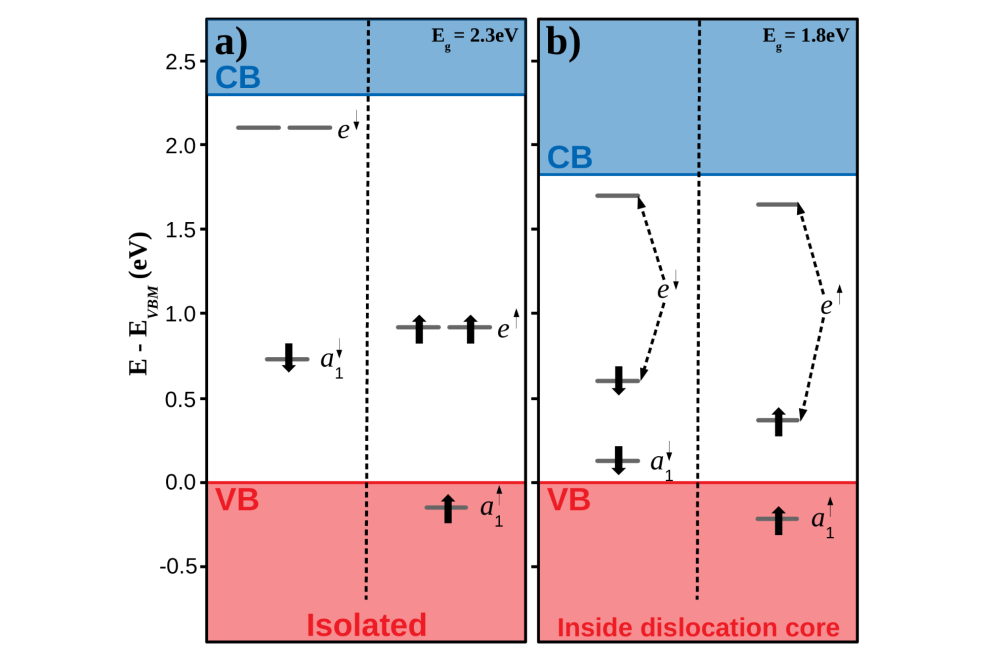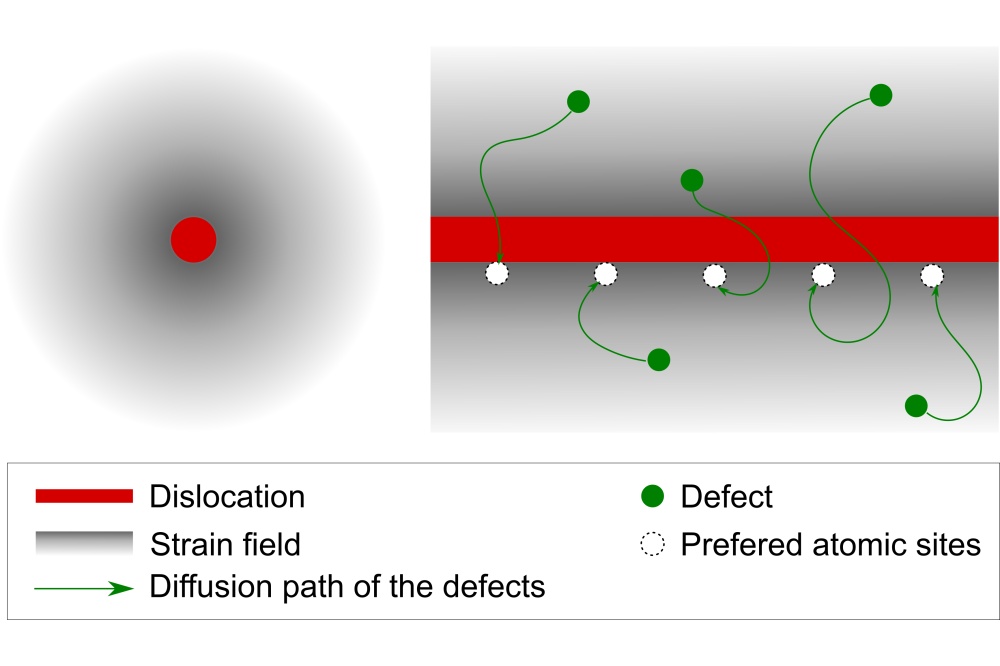Dislocations for Defect-Based Quantum Computing
Einleitung
A quantum computer is a device that exploits quantum behavior to solve a computational problem that cannot be tackled, or would take too long to solve, in a classical computer. In order to build a functioning quantum computer, several physical systems have been proposed to be used as platforms for quantum bits or “qubits”, e.g., photons, trapped atoms/ions, nuclear spins in molecules immersed in liquid solutions and point defects in solids. The latter system is advantageous from the point of view of scalability since integrated quantum devices could, in principle, be built by means of adapted fabrication techniques developed in the semiconductor industry. Nevertheless, it remains challenging to position the point defects in a deterministic array and to integrate them into large networks. The scientific aim of our project is to carry out a theoretical assessment of the potential use of line defects (dislocations) as a “quantum bus”, able to create a deterministic pattern of relevant point defects while preserving their quantum properties. Until now, dislocations have only been considered as detrimental for the correct functioning of quantum computers. Therefore, our project opens a completely new area of research, aligned with the quantum technologies' flagship of the European Commission and will help putting Europe at the forefront of the development of quantum technologies.
Methoden
To carry out our study we use density functional theory calculations at the hybrid level, as implemented in the software VASP, and use a formation energy formalism.
Ergebnisse
Based on such state-of-the-art atomistic simulations, we propose that, in order to have potential for quantum applications, dislocations should be undissociated screws, which exhibit high radial symmetry, and be electrically inactive. Such conditions are satisfied in cubic silicon carbide (3C-SiC). Our results show that the undissociated screw dislocation in this material is able to attract defect-based qubits into its core. Specifically, we find that the formation energy of the neutral divacancy is 4.2 eV lower for all configurations that have both vacancies occupying sites directly at the core of the dislocation. This result is a clear indication that self-organized arrays of relevant defect-based qubits could be created using arrays of perfect screw dislocations. Furthermore, we show that the strain field induced by this specific dislocation type is able to modulate the electronic properties of the qubit located in its core, without itself being electrically active (see Figure 1). For the specific case of the neutral divacancy in 3C-SiC, known to have real potential as qubit, our results show that these modulations result in the loss of its potential as a qubit. However, these same modulations could transform defects with no potential as qubits when located in bulk, into promising options when located inside the core of the screw dislocations.
Diskussion
Altogether, our findings represent a paradigm shift within quantum technologies, as they point out that dislocations can be used as active building blocks of future defect-based quantum computers.





